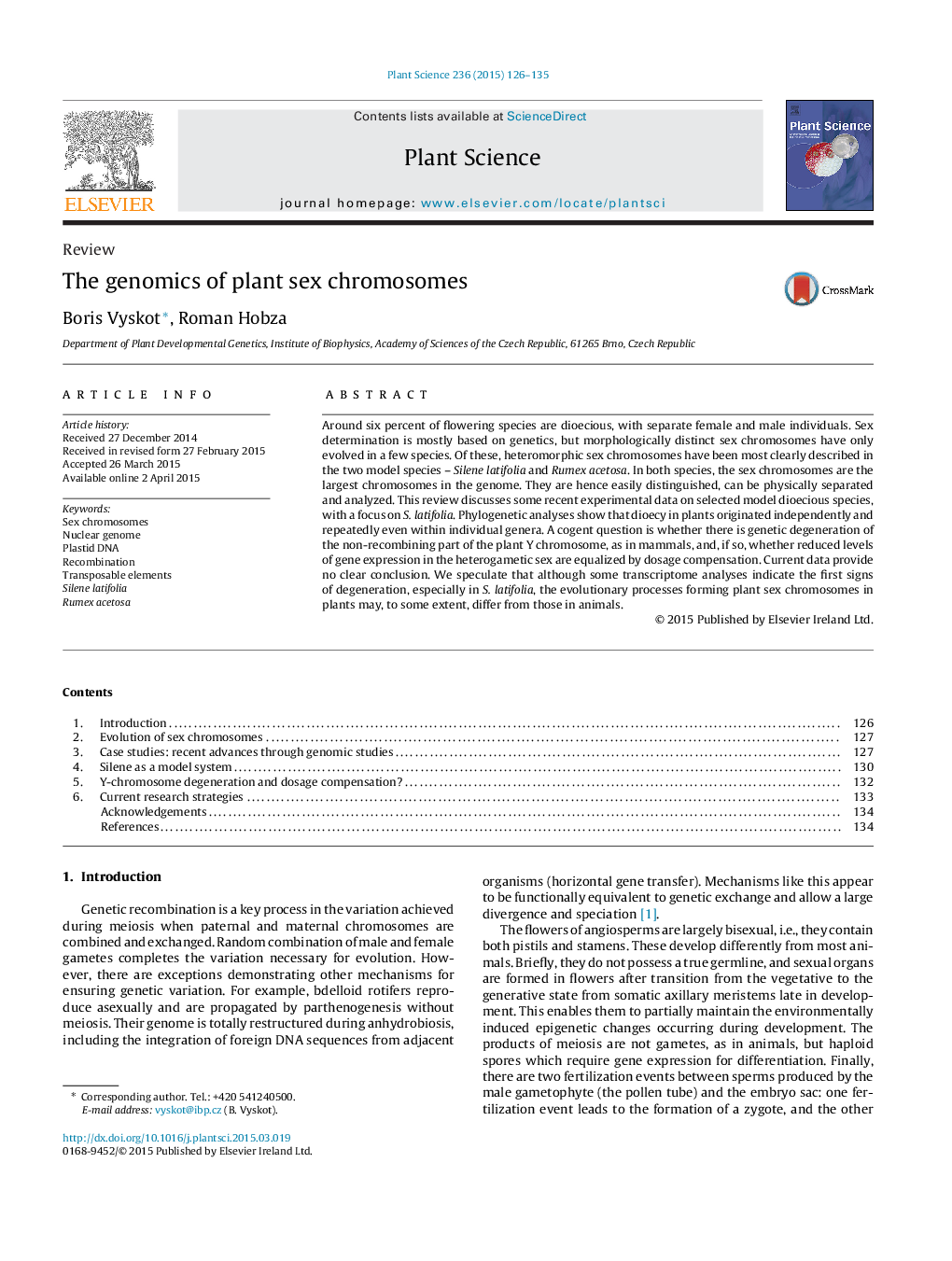| کد مقاله | کد نشریه | سال انتشار | مقاله انگلیسی | نسخه تمام متن |
|---|---|---|---|---|
| 2017014 | 1542053 | 2015 | 10 صفحه PDF | دانلود رایگان |
• Genetic sex determination evolved independently many times in plants.
• Heteromorphic sex chromosomes are very rare in dioecious plants.
• Non-recombining parts of Y accumulate repetitive sequences, including different types of retroelements.
• What is the extent of Y chromosome degeneration and is there global X chromosome dosage compensation?
Around six percent of flowering species are dioecious, with separate female and male individuals. Sex determination is mostly based on genetics, but morphologically distinct sex chromosomes have only evolved in a few species. Of these, heteromorphic sex chromosomes have been most clearly described in the two model species – Silene latifolia and Rumex acetosa. In both species, the sex chromosomes are the largest chromosomes in the genome. They are hence easily distinguished, can be physically separated and analyzed. This review discusses some recent experimental data on selected model dioecious species, with a focus on S. latifolia. Phylogenetic analyses show that dioecy in plants originated independently and repeatedly even within individual genera. A cogent question is whether there is genetic degeneration of the non-recombining part of the plant Y chromosome, as in mammals, and, if so, whether reduced levels of gene expression in the heterogametic sex are equalized by dosage compensation. Current data provide no clear conclusion. We speculate that although some transcriptome analyses indicate the first signs of degeneration, especially in S. latifolia, the evolutionary processes forming plant sex chromosomes in plants may, to some extent, differ from those in animals.
Journal: Plant Science - Volume 236, July 2015, Pages 126–135
